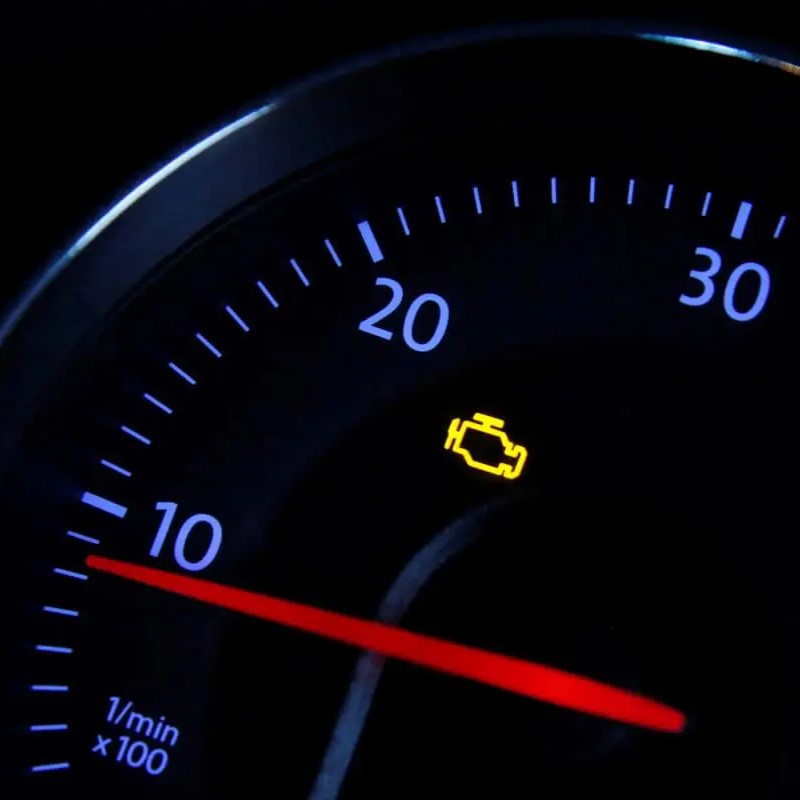The dashboard lights up with a myriad of symbols every time you start your car. While most fade away once the engine turns over, one light shouldn’t be ignored: the airbag warning light. This illuminated icon, often resembling a stick figure cradled by an airbag, signifies a potential problem with your car’s Supplemental Restraint System (SRS).
What Does the Airbag Warning Light Mean?
In simpler terms, a lit airbag light indicates a malfunction within the airbag system. Airbags are crucial safety components designed to deploy during a collision, cushioning occupants and minimizing injuries. When the light comes on, it suggests that the airbags might not function properly in an accident, posing a significant safety risk.

Causes of an Airbag Warning Light
Several factors can trigger the airbag warning light. Here are some common culprits:
- Faulty Sensors: Your car relies on a network of sensors to detect a collision’s severity. A malfunctioning sensor might misinterpret a minor bump as a major crash, prompting the light to illuminate.
- Seat Belt Issues: Inoperable seat belt pretensioners or faulty seat belt switches can also trigger the light. Seat belts work in tandem with airbags, and a problem in this system can lead to a warning.
- Airbag Clockspring Malfunction: The clockspring is a vital component that allows the steering wheel and airbag to rotate freely while maintaining electrical connections. A faulty clockspring can disrupt the airbag’s deployment circuit, causing the light to turn on.
- Electrical Problems: Loose wiring connections, damaged electrical components, or even a failing battery can disrupt the airbag system’s electrical flow, leading to a warning light.
- Water Damage: Exposure to moisture can corrode electrical connectors within the airbag system, triggering a malfunction and the warning light.
Should You Drive With an Illuminated Airbag Warning Light?
It’s strongly discouraged to drive with a lit airbag warning light. A functioning airbag system is a critical safety feature, and ignoring the light puts you and your passengers at risk. In the unfortunate event of a collision, the airbags might not deploy, potentially leading to more severe injuries.

What To Do When the Airbag Warning Light Comes On
If your car’s airbag warning light illuminates, here are the recommended steps:
- Pull Over Safely: Find a safe location to pull over as soon as possible and turn off the engine.
- Consult Your Owner’s Manual: Your car’s manual will likely provide specific instructions regarding the airbag warning light and recommended actions.
- Schedule a Service Appointment: Don’t delay! Schedule an appointment with a qualified mechanic as soon as possible to diagnose the problem.
Diagnosing and Repairing the Airbag System
A certified mechanic can diagnose the root cause of the airbag warning light by:
- Reading Diagnostic Trouble Codes (DTCs): Modern vehicles store error codes within their computer system. A scan tool can retrieve these codes, pinpointing the specific issue within the airbag system.
- Performing a Physical Inspection: The mechanic will likely inspect the airbag system’s components, wiring harnesses, and connections for any signs of damage or malfunction.
Once the diagnosis is complete, the mechanic can recommend the necessary repairs. This might involve replacing faulty sensors, repairing the clockspring, addressing electrical issues, or even reinstalling the airbags themselves.

The Importance of a Functioning Airbag System
Airbags are designed to work in conjunction with seat belts to provide additional protection in a collision. They deploy rapidly, inflating to cushion occupants and absorb impact forces. While not a substitute for safe driving practices, a functional airbag system can significantly reduce the risk of serious injuries or fatalities during an accident.
Additional Tips for Maintaining Your Airbag System
Here are some proactive measures you can take to maintain your car’s airbag system:
- Schedule Regular Maintenance: Routine maintenance appointments often include inspections of the airbag system for potential issues.
- Avoid Modifications: Modifying your car’s interior, such as installing aftermarket seats or steering wheels, can inadvertently affect the airbag system’s functionality. Consult a qualified mechanic before making any modifications.
- Follow Recall Notices: Manufacturers sometimes issue safety recalls due to identified problems with the airbag system. Be sure to address any recall notices promptly to ensure your vehicle meets safety standards.

Preventive Maintenance for Airbag System
The airbag warning light is a stark reminder of a potential safety issue. But what can you do to prevent it from ever illuminating in the first place? Here’s how proactive maintenance can keep your airbag system healthy:
Routine Checkups are Key:
Regular maintenance isn’t just about oil changes and tire rotations. Qualified mechanics typically include airbag system inspections during these appointments. They can identify minor issues, like loose connections or sensor wear, before they escalate and trigger the warning light. Think of it as a preventative measure to ensure your airbags are in top shape.
Modifications with Caution:
Upgrading your car’s interior with aftermarket seats or steering wheels can be tempting. However, these modifications can disrupt the airbag system’s delicate balance. Sensors and wiring could be compromised, hindering deployment in a critical moment. Always consult a mechanic before making any interior modifications. Their expertise can ensure any changes are done safely without compromising airbag functionality.
Heed the Recall:
Manufacturers aren’t perfect, and sometimes safety issues with airbag systems come to light after production. In these cases, they’ll issue safety recalls. These notices are crucial. Following a recall promptly ensures your car gets the necessary fixes to meet safety standards. With the identified issue addressed, you can have peace of mind knowing your airbags will function as intended during a collision.
Beyond the Basics:
While these are the mainstays of preventive airbag maintenance, there are a few additional things you can keep in mind:
- Keep it Clean: While you shouldn’t tamper with the airbag components themselves, maintaining a clean car interior can help prevent dust and debris from accumulating around the airbag modules. This can potentially hinder deployment or trigger a sensor malfunction. Regular interior cleaning with a vacuum and mild cleaning products is recommended.
- Avoid Moisture Exposure: Moisture damage can wreak havoc on electrical components, and the airbag system is no exception. Park your car in a dry place whenever possible, and address any leaks promptly to prevent moisture from reaching the airbag system’s wiring or sensors.
Highlighting common maintenance tasks to ensure proper airbag system functionality
While the article emphasizes the importance of consulting a mechanic when the airbag warning light turns on, it doesn’t delve into specific maintenance tasks you can perform to prevent the light from illuminating in the first place. Here are some common maintenance tips to keep your airbag system functioning properly:
- Schedule Regular Maintenance: During routine maintenance appointments, qualified mechanics typically include inspections of the airbag system for signs of wear or malfunction. They can identify potential problems early on before they trigger the warning light.
- Avoid Interior Modifications: Resist the urge to install aftermarket seats or steering wheels yourself. These components might interfere with the airbag system’s deployment sensors and wiring. Consult a mechanic to ensure any modifications are done correctly and don’t compromise airbag functionality.
- Follow Recall Notices Promptly: Manufacturers occasionally issue safety recalls due to discovered issues with airbag systems. Addressing these recalls as soon as possible ensures your car meets safety standards and the airbags will function properly in a collision.

The airbag warning light is a crucial safety indicator in your car. Don’t ignore it. By understanding the potential causes, taking immediate action, and maintaining your vehicle properly, you can ensure your car’s airbag system is functional and ready to protect you in case of an accident. Remember, your safety on the road is paramount.





